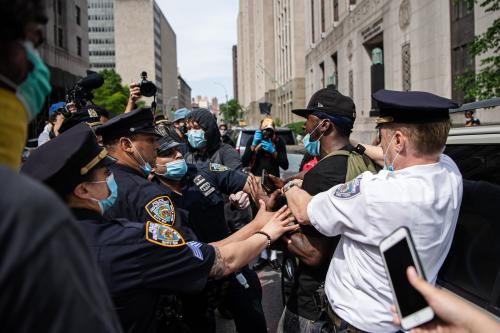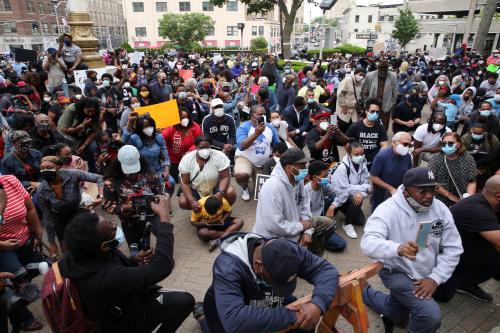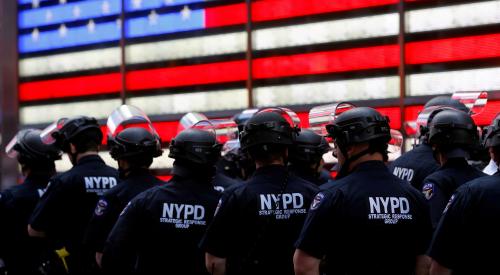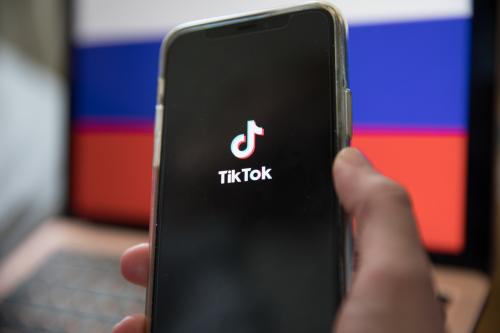Democrats and Republicans are at a stalemate on police reform. On June 24, 2020 the Republican JUSTICE Act led by Tim Scott failed to pass in the Senate. On June 25, 2020, the House of Representatives passed The George Floyd Justice in Policing Act.
June 25th is a significant date. It would have been Tamir Rice’s 18th birthday. He probably would have graduated high school this year and gone off to college. Instead, after being killed in a park while playing with a toy gun by two officers who did not deserve to wear the badge, he did not even see his 13th birthday.
Despite the strengths of The George Floyd Justice in Policing Act, the McConnell-led Senate may not even consider this bill. So, Americans may proceed through 2020 with Trump’s Executive Order on police reform.
Based on public attitudes, this stalemate is unacceptable and the Senate should consider the bill that passed in the House of Representatives. George Floyd’s death has significantly shifted public opinion as 76% of Americans (including 71% of white people) agree that incidents such as the killing of Floyd are signs of structural racism within law enforcement. This overwhelming acknowledgement of structural racism is further confirmed by police brutality inflicted onto protestors and highlighted in the killing of Rayshard Brooks in Atlanta.
The stalemate mostly centers on Republicans over-reliance on incentives for police departments and officers and Democrats push to eliminate qualified immunity and lower the criminal intent standard. While there are some other differences, for instance –the George Floyd Justice in Policing Act which limits military equipment to police departments and provides for an independent review during misconduct allegations, both sides seem to agree on:
- Certifying officers and training courses at the federal level
- Mandating body-worn cameras
- Creating a data base of “bad apples” (which would have saved George Floyd and Tamir Rice’s lives)
- Banning chokeholds (which would have saved Eric Garner’s life)
- Eliminating no-knock warrants (which would have saved Breonna Taylor’s life)
- Finally creating a federal anti-lynching bill
- Providing mental health training and assistance for officers
- Collecting use of force data (which reduces police killings by 25%)
- Providing de-escalation training
It is going to be important to restructure training. Why? Most officers receive nearly 60 hours of firearm training, but less than 10 hours of de-escalation training. Roughly 90% of calls for service do not involve violence or someone with a deadly weapon, Yet, law enforcement trains to the exact opposite. So an increase in de-escalation training is urgent.
There is an unfortunate imbalance between the increase in killings by the police and the consideration of those cases within the criminal judicial system. Officer-involved killings have increased about 25% over the past 20 years. Every 20 hours a person is killed by the police. Black people are killed every 40 hours representing about 40% of people killed by police who are not attacking or have a gun. Rarely are officers charged, convicted, or face civil liability for police killings. For example, the officers who killed Tamir Rice were not even indicted and the officer who killed Philando Castille was found not guilty.
The way that qualified immunity is applied in the criminal justice system is part of the rotten tree roots of law enforcement that need to change. Although qualified immunity is intended to relieve law enforcement from civil liability after a police brutality incident or officer-involved killing, it is often interpreted by prosecutors, judges, and juries as extending to criminal liability. Dealing with qualified immunity is critical.
My research suggests a pathway forward to absolve the political stalemate by shifting civilian payouts for police misconduct away from taxpayer money to police department liability insurance policies. In most cities and counties, civilian payouts for police misconduct come from general funds and not from police department budgets.
Civilian payouts for police misconduct put a strain on local governments and absolve police officers of culpability. Current law enforcement protocols hold officers internally accountable, but they are not externally held accountable to the communities they serve. By restructuring civilian payouts for police misconduct away from taxpayer funding to police department insurances, money normally spent on civilian payouts and lawyer fees can be used for education and work infrastructure. Improving education and creating jobs will indirectly reduce crime. Furthermore, this restructuring will improve police-civilian relations and reduce police brutality and police killings.
Currently, civil payouts for police misconduct have little impact on police departments. Little changes with their normal budgetary operating procedures. It does not have an impact on hiring and rarely impacts firing. However, these monies do impact city budgets in other ways. As I have written elsewhere, cities are paying millions of dollars in civilian payouts for police misconduct from taxpayer money that could be used for education, health, social services, and infrastructure. St. Louis and Baltimore are predominately Black cities with struggling school systems and high job displacement. Imagine if these funds went to improving schools, creating jobs, and revitalizing infrastructure. Crime would decrease.
Pricing for the police insurance plans can be based on a score that includes misconduct. The model that I am proposing is not novel. It is used in healthcare on the patient and physician side. Previously, if a patient had a pre-existing condition, their premium would be higher than someone without any pre-existing conditions. For physicians and hospitals, those who are more prone to malpractice lawsuits see increases in their insurance premiums. Police departments can operate similarly. While some advocate that police officer pensions and liability insurance can be used for civilian payouts, this approach will absolve the department and probably will not be enough money to cover the settlement. Tamir Rice’s family was awarded $6 million.
Police department liability insurance will take the burden off of taxpayers, particularly in struggling cities, and place the accountability on police departments and police officers who commit the misconduct. Based on the number of misconduct settlements and cases, insurance companies can decide whether to retain the department, increase the rate, or decrease it. This model allows for police chiefs, mayors, and County Executives to have a market-driven approach to identify officers like Derek Chauvin and justify their removal from the force.
Eventually, George Floyd’s family will receive a large civil settlement for his wrongful death. The money they have paid in taxes will be used to pay them back for the killing of their loved one. This process is a slap in the face to families whose loved ones are killed unjustifiably by police.







Commentary
Why police department insurances are the key to progress on police reform
June 26, 2020